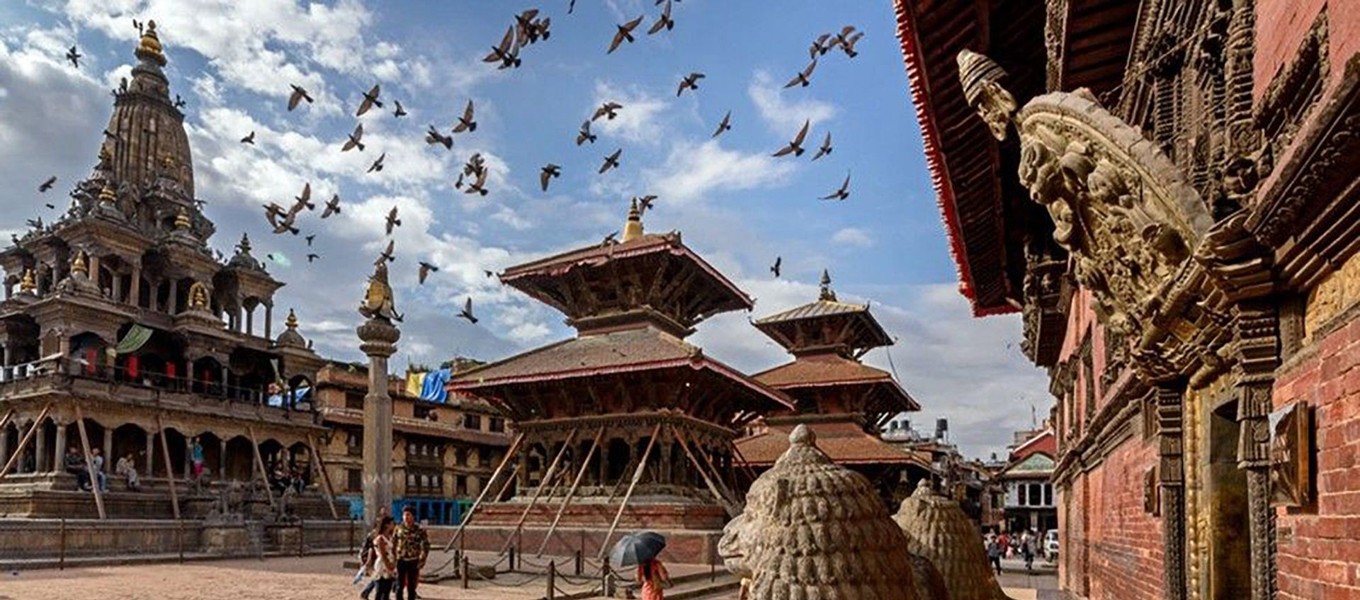
USD$ 1200
Easy
Nepal
1 Days
Patan and Lalitpur is the same city with two names, Patan is an old name as Lalitpur means the city of arts and crafts, due to its beautiful work on woods-metal and stones with masterpiece carving. Patan and Lalitpur an adjoining city of Kathmandu located south a separate district at one time had its own Patan kingdom where visitors can walk around its old Malla regime palaces and courtyard, includes a tour of temples and monasteries with its colorful bazaar nearby.
Patan and Lalitpur Patan and Lalitpur city cultural and heritage tour:
Starts from 9 a.m. to 1 p.m. on a half day tour.
Starts from 09 a.m. to 04 p.m. on a full day tour.
Where interested people can extend for more days to visit other places of interest within Patan or Lalitpur city, where all tour guided by expert city guide on spacious coach and car as per group size, where all entrance fee will be included on the tour package.
Within Patan and Lalitpur Tour:
For Half-Day or Day Tour from 9 a.m.to 01 p.m. (on the Half day) extends to 4-5 p.m. on a Full Day tour with comfortable cars-coach as per groups size can combine this half-day tour of Patan with Bhaktapur city also.
Patan Durbar Square (Approx: 02- 03 hrs)
Places of interest around Patan / Lalitpur city:
Patan Durbar Square:
Center of Patan / Lalitpur enriched with ancient Newari architecture with three main courtyards within the palace:
Mul Chowk, Sundari Chowk, Keshav Narayan Chowk with Mul chowk oldest the center of Patan square, several multi-sized and a multi-styled temple houses the western part of the complex. Main among these is Krishna Temple, Bhimsen Temple and the Golden Temple of Hiranya.
Mul Chowk (royal courtyard):
Famous and largest courtyards among three main Chowk (Square), the Bidya Temple is located at the center of the courtyard and the Taleju temples stand around the courtyard.
Sundari Chowk:
Sundari Chowk is to the south of the Mul Chowk with a sunken tank known as Tusha Hiti Mul Chowk & Taleju Temple.
Keshav Narayan Chowk:
Keshav Narayan Chowk on the northern part with Degutale temple, it is the site of the earliest Malla palace in Patan, the Chowk sits on the older foundations of a Buddhist monastery.
Krishna Temple:
This temple dedicated to Hindu Lord Krishna was erected in the 17th century, considered to be the first one to be built in Shikara architecture, it commands a vital position around durbar square. The elegant shikhara-style temple is ranked as one of the gems of Durbar Square. The temple is compared with sacred Mount Meru, which is the abode of the god Shiva according to Hindu scriptures.
Mahaboudha:
A Buddhist temple of Mahaboudha, which is made of clay bricks, lies to the east of the Durbar Square. Hundreds of Buddha images are engraved in the bricks. The temple is known for its fine terra cotta work.
Kumbheshwor:
Just at the rim of Durbar square lies five-storied pagoda temple of Lord Siva built by King Jayasthiti Malla, inside the temple premises a natural spring, its source the belief is from the famous glacial lake of Gosainkunda around Langtang Himal of Rasuwa district. The golden work on the temple was added later in 1422 A.D. On the festival of Janai Purnima (month of August), ritual bathing and fair take place.
Jagat Narayan Temple:
Jagatnarayan temple a tall Shikara style temple devoted to Lord Vishnu, red bricks are used for the construction. The temple also holds a fine metal statue of Garuda, Ganesh, and Hanuman, all related to Hindu religion and mythology.
Rudra Varna Mahavihar:
This Buddhist monastery holds an amazing collection of images and idols in metal, stone, and wood. Legend holds that the Kings in the ancient times were crowned in this monastery. Many of the treasures offered by the people can be seen here even today.
The Asoka Stupas:
The Indian Emperor Asoka visited Nepal in 250 B.C and constructed four ancient stupas around four corners of Patan. The four stupas are located in Pulchowk, Lagankhel, Imatole and in Teta (way to Sano Gaon) respectively.
Patan Industrial Estate:
Located outside the city suburb near the Stupa at Lagankhel, an interesting place to visit and shopping for souvenirs, where all the handicrafts are hand made from metal, wood to stone artwork includes carpet, Pashmina shawl are woven here, as Patan / Lalitpur is the city of beauty and arts, it will be an opportunity to observe the work and skill of craftsman and to purchase some items from this place.
Tour to extend for a day:
Tibetan Refugee Camp:
Tibetan Refugee camp located on the south of Patan area near the only Nepal Zoo, where one can observe the happy-cheerful workers weaving carpets. This place was established in the early 1970s after the Chinese invasion in Tibet where a great number of Tibetan migrated here, and the Nepal Government established this place as a permanent camp or settlement for the Tibetan Refugees here you can shop souvenirs as well.
Bungmati and Kokana villages:
A short drive to Bungmati and Kokana villages located on the very edge of Kathmandu valley around Lalitpur district, where the way of life villagers still Exists at it was for many past centuries, and old Newari village with some Tamang and another tribe as minority, here visit the local old houses and famous temples, this place famous for handmade garments and mustard oils..





©2019 Yeti Mountain Treks